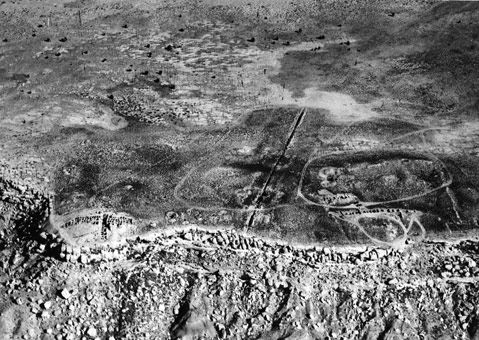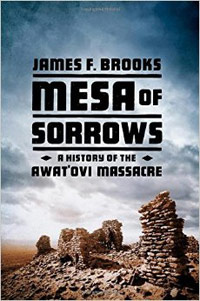Finding Peace Amid Hopi Violence
UCSB Professor James Brooks Explores Mysterious Southwestern Massacre in ‘Mesa of Sorrows’

Modern Americans love thinking that the Hopi people of the Southwest represent the epitome of peacefulness. But in the year 1700, in the populous village of Awat’ovi, Hopi slaughtered Hopi by the hundreds in a predawn raid, showering crushed red pepper, fire, and arrows into subterranean kivas while kidnapping the women and children who survived. This massacre is well documented, but UCSB history and anthropology professor James Brooks wanted to find out why it occurred and whether the tragic incident resonates in today’s world.
“How could perfectly decent people do terrible things?” he wondered. “I thought there was an opportunity to look at a moment when what appears to be a stable, enduring community has this terrible conflagration, and maybe it would speak to other issues on a more contemporary setting.”

His new book, Mesa of Sorrows, is the result of his research, revealing for the first time what he believes are the cultural and environmental roots of the Awat’ovi disaster. In so doing, he’s also trying to forge a path toward forgiveness among the Hopi themselves, many of whom see this incident as a stain on their past. “This is not an exercise in massacre lit,” said Brooks, who theorizes that the purge is a part of a cyclical purification cycle with no real villains. “In the long run, it is very humanizing. It allows us to look at indigenous peoples as three-dimensional beings instead of two-dimensional cardboard cutouts that people burn their sage to.”
The book is the first time that Brooks, who’s won major awards for his academic tomes on the Southwest, ventured into popular writing. He found it liberating, learning that mainstream books should make the reader feel smart, rather than showing how smart the author is. “Now I don’t know if I can write that academic stuff anymore,” said Brooks, who admits that some colleagues may eye him with suspicion now, but he encourages other academics, especially in the humanities, to start speaking to a larger crowd. “We need to find vehicles with which we can speak outside of the academy,” he said. “I hope this is one way.”
His vehicle is especially powerful. In evocative and engaging language, Brooks blends chapters about modern site visits and Hopi legends with tales of archaeological expeditions gone awry, insights into Spanish colonialism, and colorful characters of both myth and history. And he’s had no trouble finding a wide audience, including the millions who visit the Southwest every year to experience the landscape and fascinating culture for themselves. “They have a sense of wonder about the past,” said Brooks. “Those are the people I want to reach.”
4•1•1
James Brooks will speak about Mesa of Sorrows: A History of the Awat’ovi Massacre at the Alhecama Theatre (914 Santa Barbara St.) on Wednesday, May 11, at 7 p.m. in an event hosted by the S.B. Trust for Historic Preservation and the UCSB History Associates. Free for members; $10 otherwise.



